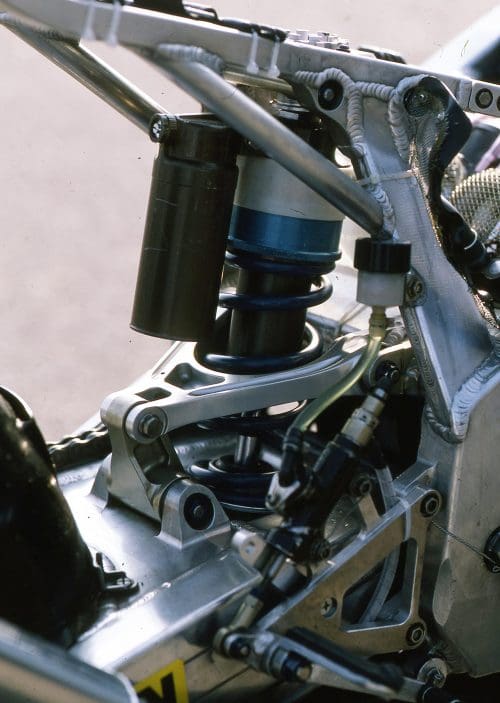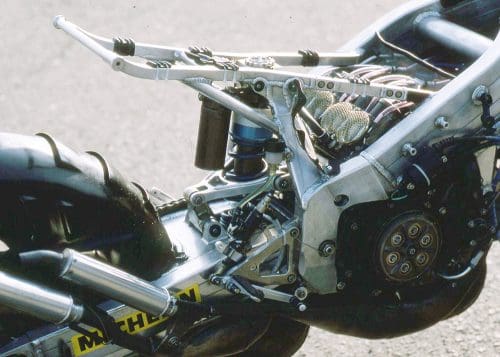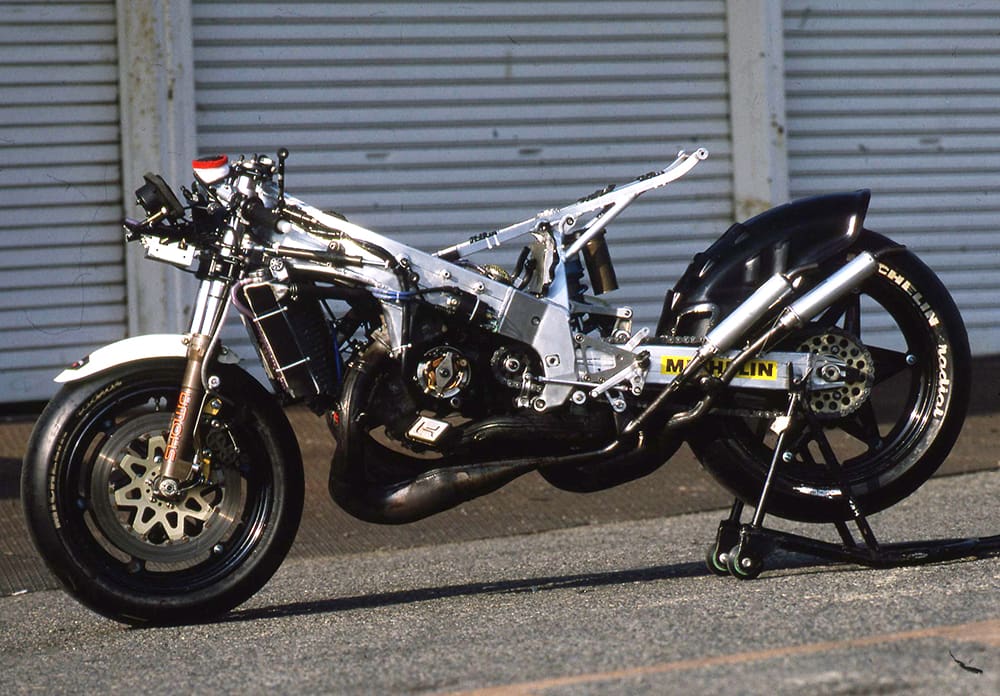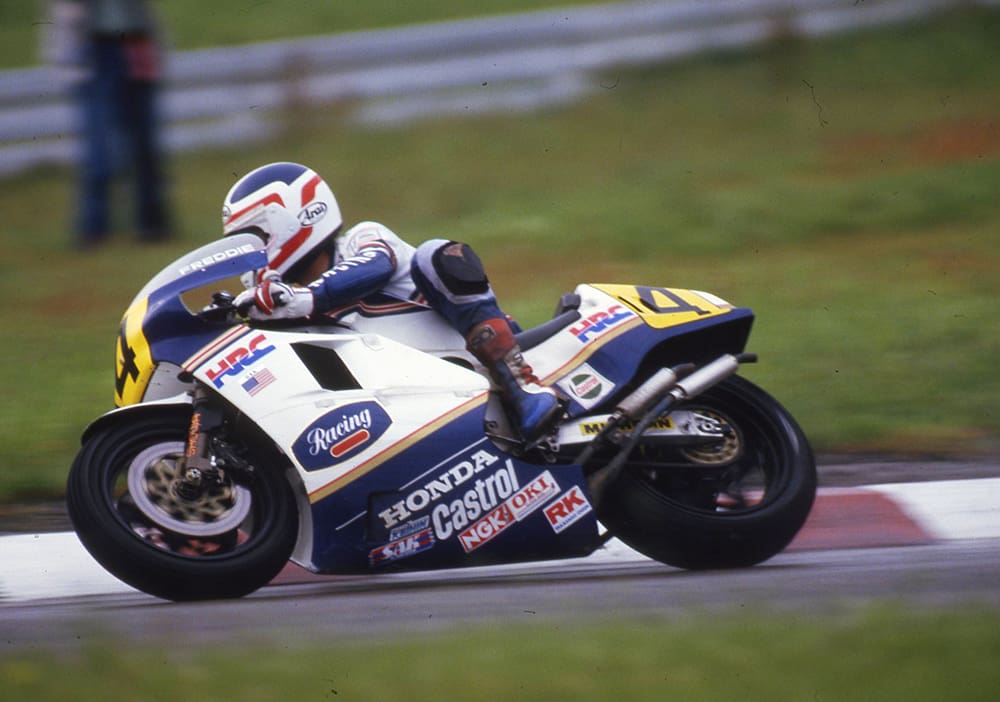In 1985, Freddie Spencer rewrote the record books by winning the 250cc and 500cc grand prix titles in one season. Back in 2015, Freddie talked us through the trials behind the triumph
Even though I was a pretty fit guy, doing two big races the same day was really tough,” begins Freddie. “But there were other things besides the racing that were more difficult that people didn’t see.
“We showed up at Surfers Paradise [in 1985] and we had the NSR250, we had this NSR500 which was the 1984 model with weight strapped to it in different places, and I had to somehow test around 300 different radial tyres for Michelin doing 200 laps a day! And all without any data logging – I was the telemetry, I was the feedback. I was riding continuously from 9.30am till 4.30 or 5pm.
“I would wake up in the morning, look in the mirror at the age of 23 and think: who in the world ever thought about doing this? My hands were bleeding, and I was having to get them taped up because of doing all these countless laps just on the off chance that the tyres I was trying to get to work on the 500 were going to be what I needed on a completely different bike.

“The first GP at Kyalami was the worst chatter I had ever experienced – absolutely awful. I won the 250 race, but Eddie [Lawson] beat me in the 500. He rode really well and the Yamaha went good, so I realised, hey, this is going to be tough! I knew that once the first four or five races were up, if I didn’t have this 500 thing figured out, we probably weren’t going to continue with the 250. I personally felt that doing both championships was really important, but I knew Honda would surely ask me to stop riding the 250 to focus 100 percent on the 500.
“After Kyalami we tested front radials, plus we tried different crankshaft weights and frame stiffness to produce different chassis harmonics in case it was a vibration issue that caused stability problems. But the inherent problem was the radials. We were improving them week in week out and getting them better and better, but when the rear got better, the front was an issue, and if the front got better, the rear came around on you off-throttle. We were juggling two imponderables: the chassis and the tyre development. It seemed we’d actually been closer to where we needed to be two months earlier.

“The second GP was at Jarama, and on Sunday morning in warm-up I was still trying to figure out the front radial. We had two tyres to test, and I put on one and straight away it was chattering. So I went to the other one which was the last tyre we had to try out. In turn one at the end of my first lap it felt good, but then in turn two there’s that little kink behind the pits. I peeled the bike in on the brakes and got halfway in on my lean angle – and then it just went booof! It was the quickest I ever crashed. I couldn’t get my hand out in time, so it got stuck under the bar before the bike dug in and cartwheeled several times, with body parts and pieces flying everywhere. They were running the 500cc race ahead of the 250 at 11am so the King of Spain could be there, so I had precious little time to repair myself. Anyway, Erv [Kanemoto, Freddie’s race engineer] and the guys got the bike back together again, and I ended up winning the 500 race with my hands broke up after leading every lap.
“All these issues with the tyres and chassis were affecting me as a rider, as the guy who was tilting that thing into a turn at 120mph and dealing with chatter or direction change or grip or predictability issues or all of the above, and risking a crash that could happen at full lean angle or barely off upright, or anything in between. So my hand was hurt and we had to somehow get this thing figured out before I got hurt worse. Plus I was under pressure due to the fact that I had to do this in a short amount of time, otherwise they wouldn’t let me ride the 250.

“It was at the German GP, in the last session on Saturday afternoon, that we made the breakthrough. As usual once we’d got to Europe, Michelin had all these handbuilt tyres they’d trucked over from France. Friday we showed up, nothing was working, so they hand-built some more overnight, and brought them for Saturday. It was just one of those moments I can remember like it was yesterday. I went out, went through the first chicane, went through the right hander out the back, and I shouted out inside my helmet “YES!”
“It just felt so right, and I dropped my lap time in that one session by a second and a half. Eddie was quicker, but I was second quickest, so now we can go racing! Next day it was a wet race and Christian Sarron won it on the Yamaha, so I didn’t actually get the benefits of that right away. But I knew we were finally headed in the right direction – it was discovering that tyre magic formula that fixed it.

“Basically it was such a big change that my season – in fact, my whole time aboard the NSR500 V4 – split into pre- and post-Germany ’85.
We had another wet race that year at Silverstone, and it was especially memorable because that day I had both races turn out completely opposite for me. The 250 British GP was the worst planned race I had ever done – period. I went in knowing that all I needed to do was to finish fourth and I’d won the World Championship.

“So here I was with three races to go in the Championship, having gone through everything in the early part of the season, and if I could wrap up the 250 title first and then win the 500 race, then I could clinch the 500 championship in Sweden. So I had a great plan, and all I had to do was finish fourth in the 250 race.
“Not a good idea! It was probably the worst thing I had ever done up to that point in my career. The race started and they were all flying, but I was struggling to keep up. If Alan Carter hadn’t crashed I’d have finished fifth, but I ended up fourth because of that and won the World Championship – but didn’t feel I deserved to.

“Well, let me tell you that when that 500cc race started, I thought: I’m going to do the complete opposite, I mean I’m going to just GO! It was pouring with rain, but after six or seven laps
I had a big lead, and I rode to the finish.
“That was a day of two completely different things: I won the 250 Championship in the worst race I had ever ridden to that point, and the 500 race was absolutely one of the best I have ever ridden, without question – maybe the best. But it was for a reason maybe people didn’t know about until now. It gave me a lot of satisfaction, and this time I was very happy that the 500 race was after the 250! That set me on course to win the 500 title and I duly clinched it in the next race in the Swedish GP at Anderstorp, as planned.
“Of course, Honda were very pleased about this, especially after starting so late in designing the bike, but I was just part of an incredible team. It was a privilege for me to be involved with people who have gone on to do so much in our sport, and I am just a small part of that achievement of winning two world titles in the same year with two completely new bikes. Without question the hardest I ever rode (besides when I was battling with Kenny in 1983!) was in testing. That’s how we made 1985 into such a great year for us both – myself and Honda.”

Story Alan Cathcart Photography GOLD & GOOSE & Hidenobu Takeuchi